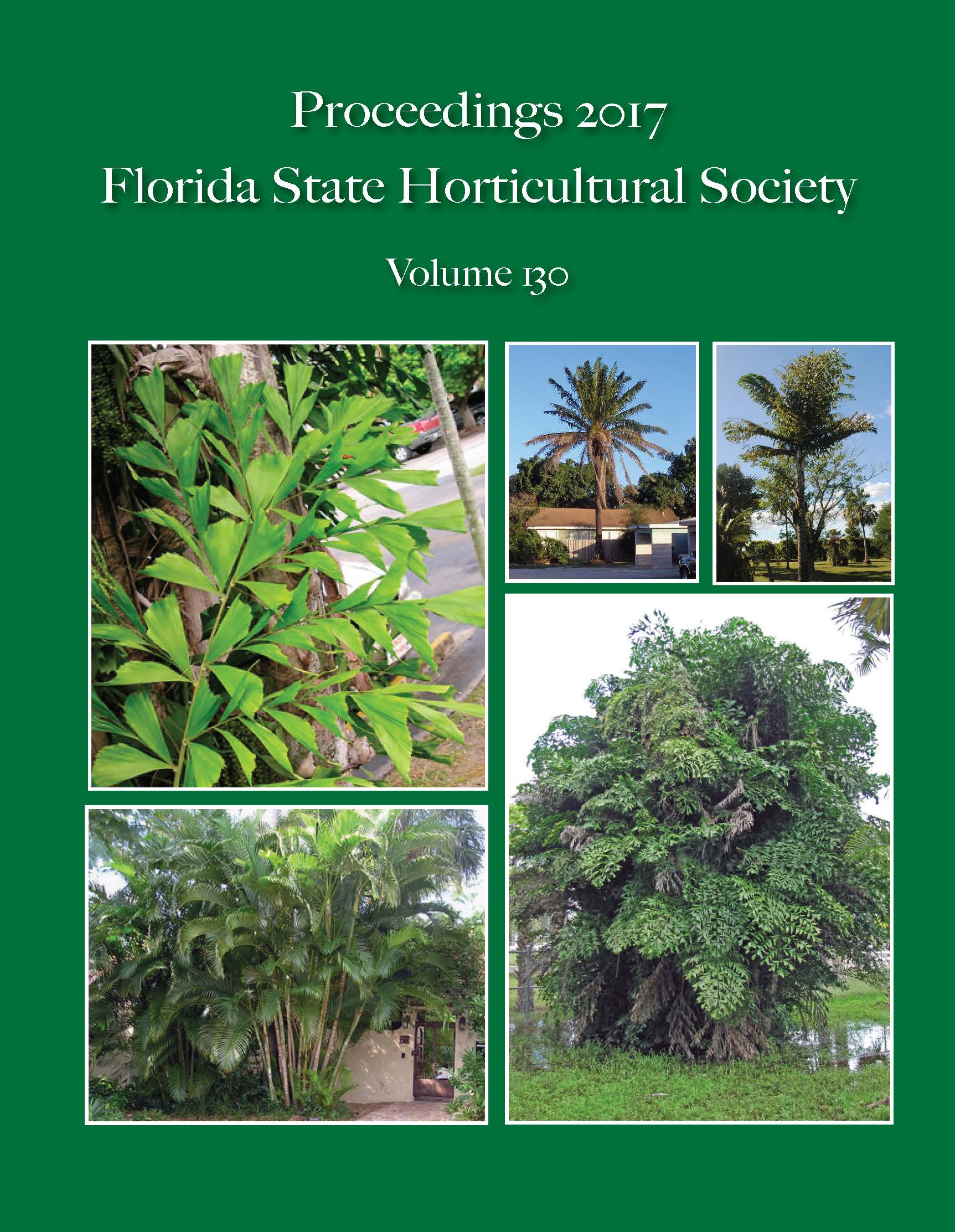Influence of Transient Intermittent Stress on Huanglongbing Development in Graft-inoculated Citrus
Abstract
Greenhouse inoculations with Candidatus Liberibacter asiaticus (CLas) are commonly used to assess huanglongbing (HLB) resistance in pot-grown Citrus genotypes. Even in highly susceptible sweet orange (C. sinensis), it typically takes 8 to 10 months for high levels of CLas and HLB symptoms to develop. Some growers and researchers have observed that environmental stress appears to accelerate HLB progression, and this study was conducted to see if controlled drought and nutrient stresses in inoculated trees could more quickly differentiate between susceptible and resistant trees. Trees in the study were ‘Valencia’ (known HLB-susceptible; C. sinensis), ‘Carrizo’ (known HLB-resistant; C. sinensis x Poncirus trifoliata), and ‘Temple’ (reportedly HLB-tolerant; C. reticulata x C. sinensis). Treatments included: 1) a non-inoculated control with full water and full fertilizer, and five additional treatments applied to trees that were graft-inoculated in December 2012; 2) a full water with full fertilizer (fertilizer applied every three weeks); 3) full water without fertilizer; 4) full water with reduced fertilizer (fertilizer applied every twelve weeks; 1/4 of the rate of the full nutrition treatment); 5) drought stress (trees allowed to slightly wilt before watering every two months) with full fertilizer (applied every three weeks); and 6) drought stress with reduced fertilizer (applied every twelve weeks; both drought and nutrient stress). By April 2013 (4 months after inoculation), application of either drought stress or moderate nutrient stress or both to ‘Valencia’ and ‘Temple’ resulted in higher CLas titer than in comparably treated ‘Carrizo’ seedlings, permitting identification of ‘Carrizo’ as having HLB-resistance compared to the HLB-susceptible ‘Valencia’ and ‘Temple’.

